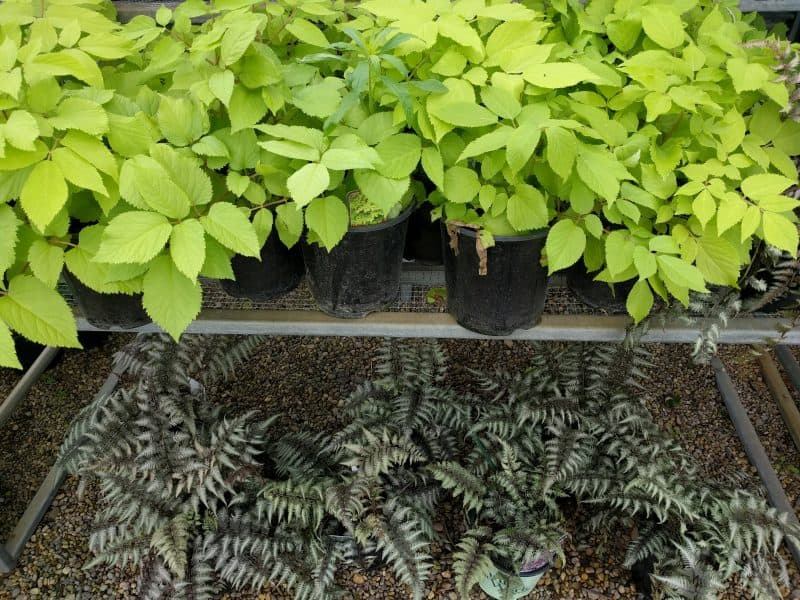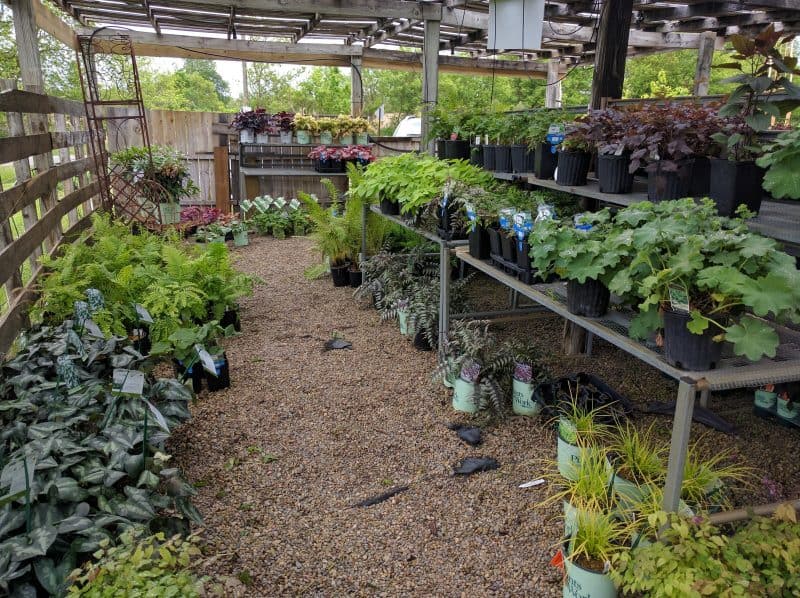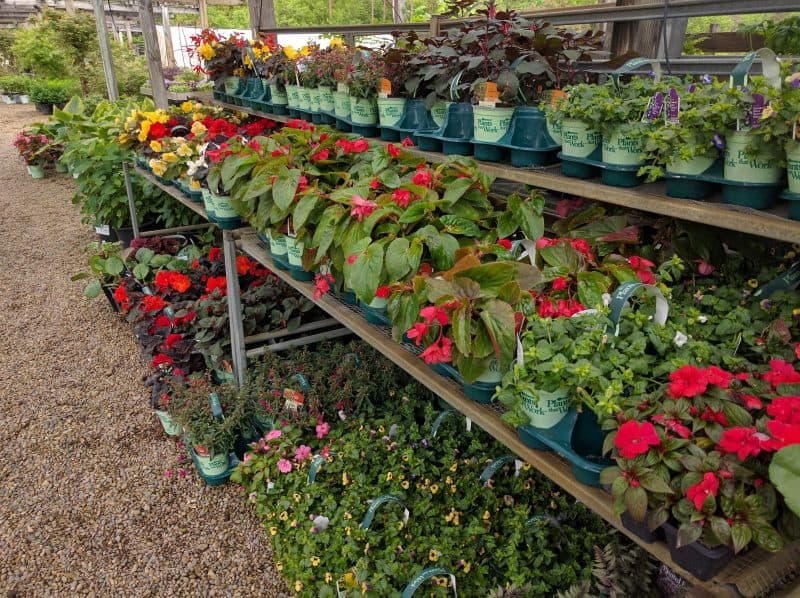Lotus Experts Share Their Best Flowers For Beautiful Shade Gardens
Posted on July 12, 2021

[vc_row][vc_column][vc_column_text]There’s a reason our team loves shade perennials. These hardy Michigan flowers are key players in many of our favorite shade gardens, and without them, outdoor spaces everywhere would be a little less colorful.
What are shade perennials?
Before we take a look at the big hitters, it’s worth exploring exactly what is a shade perennial? Like other perennials, shade perennials are cold-hardy plants that flower year after year, remaining dormant through winter then bursting into bloom when temperatures rise.
But whereas most perennial plants favor spots with access to at least moderate sunlight, shade perennials thrive in low-light conditions. They do well nestled between trees or next to shrubs or fences, and are a fantastic option for brightening up otherwise hard to plant areas.
Shade perennials do best when planted in areas of full or partial shade. While identifying the shade level in your yard might sound simple, it can be more complicated than many people expect. The amount of light a space receives changes season to season, particularly in areas where large trees are the primary source of shade. Because of this, May, June, and July are the best months to monitor your space, as this is when most trees will have full leaf canopies.

How do you know your shade level?
To identify exactly what level of shade you’re working with, take a look at how many hours of sun the area gets per day. You should aim to check on the area every 30 minutes or so during daylight hours. One to two weeks of monitoring should be enough to give you an average.
Your outdoor space will fit into one of four categories:
- Full sun – at least 6-8 hours of sun every day
- Partial sun or partial shade – Generally this means between 4-6 hours of sun per day. It is best to place plants labeled “partial shade” in areas that fit the lower end of this range, while plants labeled “partial sun” perform better at the higher end.
- Full shade – Typically, full shaded areas receive four hours or less of sunlight per day. The label “full shade” normally indicates the plant needs just a little light, rather than no light at all.
What are the best shade perennials for Ann Arbor, Michigan?
To answer this question, we picked the brains of three Lotus horticulture experts.
Lauren Yelen, Lotus Designer
I love Cimicifuga (Snakeroot) for its lacy, deep maroon foliage, and late summer blooms. Shade plants do not bloom often at this time of year, so this is a unique occurrence. It looks incredible paired with blue or chartreuse foliage plants like big Blue Hostas and All Gold Japanese Forest Grass.
I also love Jack Frost Brunnera, which has cute purple flowers in the spring, and iridescent silver foliage year-round. It lights up shady corners and looks fabulous with forest grasses, dark foliage like Ligularia and Coral Bells.
Ferns are another great option when it comes to filling a shaded garden, particularly Branford Beauty. It has a unique, frosty color similar to that of a Japanese Painted Fern, but with an upright growth structure like that of a Lady Fern.
If you’re looking for a native plant to create a gorgeous clumping or ground cover effect, then the Variegated Solomons Seal is a fantastic choice. The Ostrich Fern is a lovely native option for massing along the edges of woodland. It’s a seriously aggressive grower, so it’s perfect for crowding out invasive species.
Stacey Rayer, Horticulturist
I love any type of shade-tolerant Hellebore. They thrive in areas of dry shade and bloom throughout April, May, and June. They have a great presence in the garden. For early spring I am a fan of Epimedium. They have great heart-shaped foliage and bloom on slowly expanding plants.
Kirengeshoma (Yellow waxbells) is a colorful option with huge leaves and exotic late summer flowers. Hosta also adds exciting scale to a shade garden, with leaves ranging from tiny to giant. I like varieties that have thick, substantial leaves and fragrant flowers. Hummingbirds love their nectar too!”
For Fall color I like Green Leaf Japanese Maples, which do great in shaded areas. My other favorites include Hostas (June, Guacamole, Aphrodite), Acer Palmatum, and Viridis.
Steve Scheuring, Maintenance Manager
For me, my favorite plants are those that are successful, happy, and healthy. Understanding the goals for the garden, the amount of sunlight, soil type, and expected plant size range are the most important factors in planning a garden. If you achieve each of those factors, the whole area will become your favorite, rather than individual plant species.
Through the years my favorite plants have changed regularly. Now, I like to focus on plant combinations and accent plants that change throughout the growing season. This is even more true when it comes to shade gardening because it is so much about the leaf color and texture, rather than flowers.
Keep in mind that mixed gardens are harder to maintain than gardens with just a few plant varieties in large groups. There’s no reason that these large swathes of plantings can’t be equally as attractive if you use complementary colors, textures, and sizes.

Create Your Own Shade Garden Sanctuary
Whatever conditions you are working with, it is possible to create stunning outdoor spaces that work with, not against, the natural surroundings. Shade gardens can add depth and character to a yard, and when planted with care, can thrive just as much as their sunny counterparts.
Our team of landscape designers and architects is made up of experienced professionals, each with their own portfolio of beautiful low-light spaces. From woodland sanctuaries to contemporary court-yards, Lotus is dedicated to creating unique outdoor spaces where nature can thrive.
If you’re interested in transforming your shaded space, then fill out our Design Survey to get started.[/vc_column_text][/vc_column][/vc_row]
